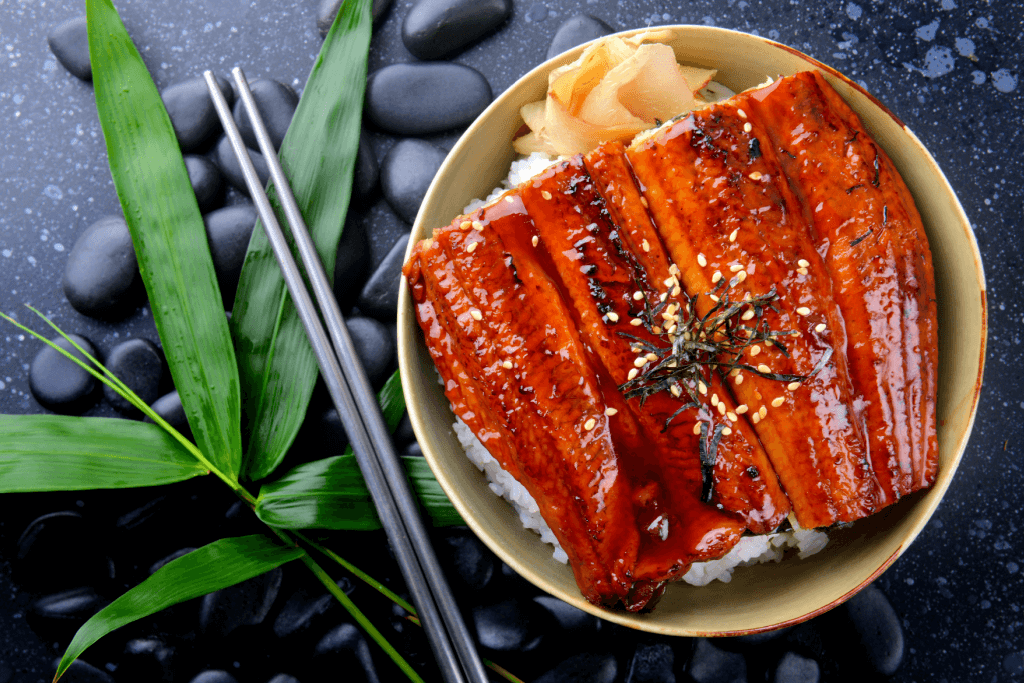Unagi, or freshwater eel, holds a special place in Japanese cuisine. Its distinct flavor and tender texture have captivated palates for centuries. We’ll delve into what it is and how to cook it, exploring its association with the traditional “Day of the Ox” (Doyo no Ushi), popular unagi dishes, and iconic places known for serving this delectable delicacy. Join us as we uncover the secrets behind this beloved Japanese culinary treasure!
Table of Contents
ToggleWhat is Unagi?
Generally, unagi belongs to the Anguillidae fish family and is usually found in freshwater places like rivers and lakes. It stands out because of its unique flavor and tender texture. Moreover, its meat has a rich and juicy taste, which gets even better when grilled over charcoal or a similar heat source.

During cooking, a sweet soy-based glaze is usually applied to the eel, giving it a delightful combination of sweet and savory flavors. It can be cooked in various ways, but one of the most popular methods is the traditional Japanese kabayaki technique. Without further ado, here are a few standard cooking methods for preparing unagi:
Grilled (Kabayaki):
Overall, this is the most common and traditional way of cooking unagi. The cook fillets and butterflies the eel then grills it over charcoal or a similar heat source. They brush a sweet soy-based tare glaze onto the eel during grilling, creating a caramelized and flavorful coating.
Tempura:
While less common, unagi can also be prepared as a tempura dish. Tempura is a Japanese cooking technique that involves coating ingredients in a light batter and frying them until crispy—unagi tempura results in a unique combination of crispy exterior and tender eel inside.
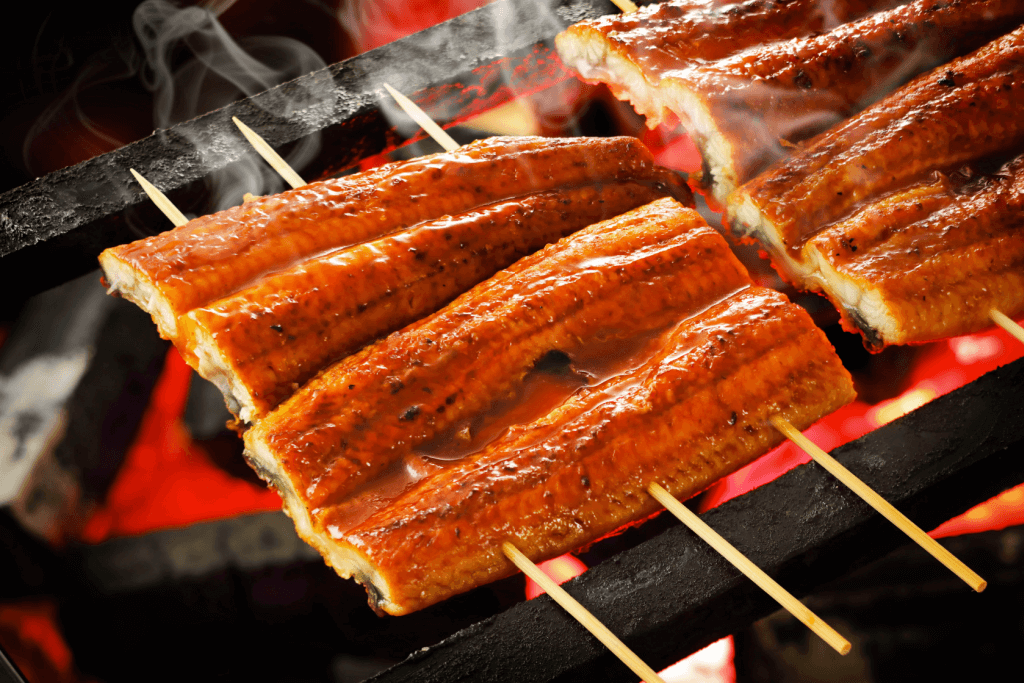
Simmered (Nitsuke):
Chefs can simmer unagi in a flavorful broth or sauce known as nitsuke. To emphasize, they gently cook the eel in the simmering liquid, allowing it to absorb the flavors and become tender and succulent.
Doyo no Ushi: A Summertime Tradition
Doyo no Ushi, also known as the “Day of the Ox,” is an essential tradition in Japanese culture, especially during the hottest months of summer. Celebrated on specific days in July and August according to the lunar calendar, this occasion holds a special place in the hearts of the Japanese people. One of the most significant aspects of Doyo no Ushi is eating unagi. According to legend, it provides strength, energy, and resilience in combating the scorching heat.

During Doyo no Ushi, families, friends, and strangers join this age-old practice. It’s also not uncommon to see long queues outside famous restaurants as people wait to experience the delicacy associated with this tradition. As a result, establishments prepare special menus and promotions during this period, offering an opportunity to savor grilled eel in its finest form.
The connection between unagi and Doyo no Ushi lies in the belief that the eel, a resilient and tenacious creature, possesses properties that can help humans endure the sweltering summer weather. The nutrients in eel, including vitamins, minerals, and omega-3 fatty acids, are beneficial for maintaining energy levels and stamina. As a result, this tradition reflects Japanese culture’s reverence for nature and its deep appreciation for the seasonal bounty it provides.
Are you looking to enjoy even more traditional Japanese dishes? Check out Sakuraco! Sakuraco delivers traditional Japanese snacks, teas, sweets, and snacks from Japan to your door every month so that you can enjoy Japan’s taste anywhere!

Unagi Dishes: Exploring Culinary Treasures
Unagi takes center stage in a range of mouthwatering dishes showcasing exquisite flavors and textures. Let’s delve into some of the most popular preparations:
Unadon (Unagi Donburi)
Unadon is the classic unagi dish featuring grilled eel served over a bed of steamed rice. Chefs carefully grill the eel to perfection, creating a caramelized exterior and a succulent, tender interior. To emphasize, they drizzle the unadon with a sweet soy-based glaze called tare, adding a delightful umami flavor. Afterward, they garnish it with thinly sliced omelets, pickles, and green onions, creating a harmonious balance of tastes and textures.
Unagi Sushi (Unagi Nigiri)
Unagi is also a prized ingredient in sushi. People typically brush the eel with tare before placing it on the rice, imparting the sushi with its rich flavors. Combining the tender, slightly smoky eel, and the vinegared rice creates a delightful contrast that tantalizes the taste buds.
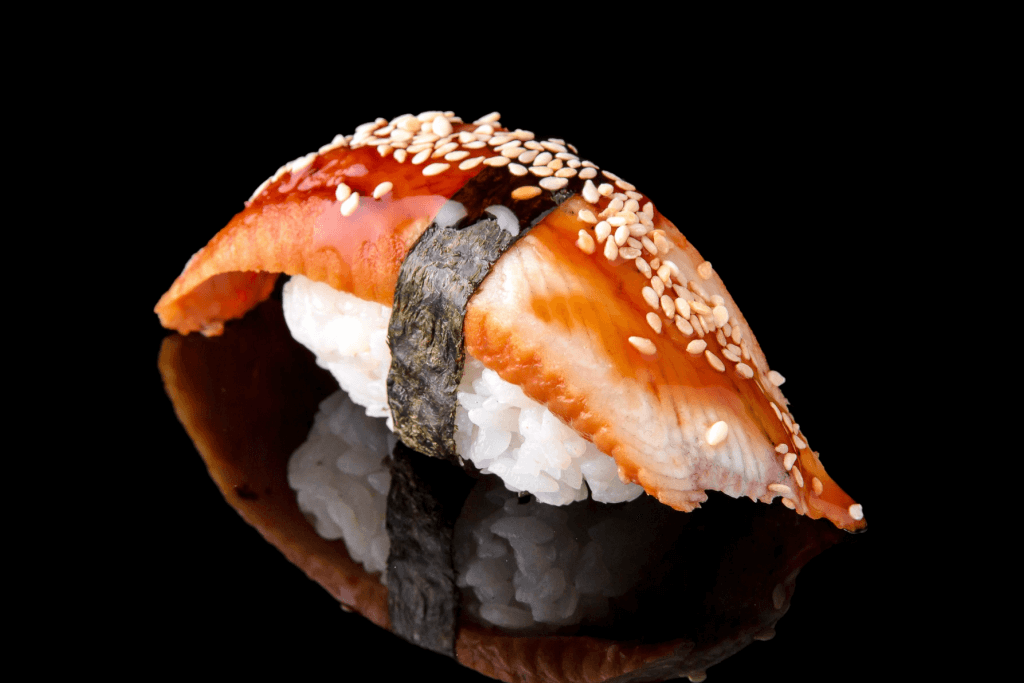
Unagi Kabutoyaki
In kabutoyaki, chefs grill the whole eel with its head and skin intact, creating a unique preparation. They marinate and season the eel before grilling it until the skin becomes crispy and the flesh turns tender. Moreover, they often serve unagi kabutoyaki on a platter, showcasing the visually stunning presentation of the grilled eel.
Unagi Tempura
Generally, chefs can transform grilled eel into a unique tempura dish by cutting it into bite-sized pieces, coating them in a light, crispy batter, and deep-frying until golden. Unagi tempura provides a delightful contrast between the crunchy exterior and the juicy eel within. It usually comes with a dipping sauce as a flavorful appetizer or as part of a larger tempura meal.
Iconic Places for Unagi Enthusiasts
Japan boasts several regions known for their exceptional unagi and culinary skill. Here are a couple of places that are famous for their unagi offerings:
Hamamatsu, Shizuoka Prefecture
Located in central Japan, Hamamatsu is famous for its high-quality unagi. The region’s pristine waters and ideal farming conditions contribute to their cultivated eel’s exceptional taste and texture. Moreover, restaurants in Hamamatsu especially pride themselves on serving top-notch dishes, including unadon and other creative preparations.
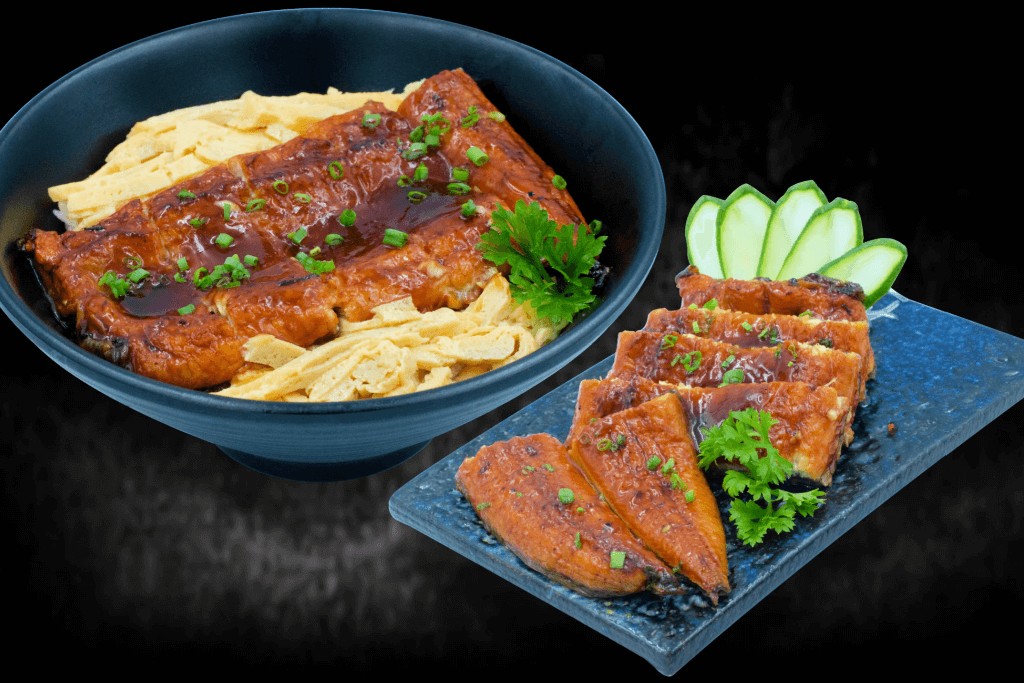
Nagoya, Aichi Prefecture
Nagoya is a city celebrated for its unique style of unagi cuisine known as Hitsumabushi. Hitsumabushi involves grilling the eel, chopping it into small pieces, and serving it over a rice bowl. Additionally, diners can savor the dish in three ways: enjoying the eel, mixing it with condiments like wasabi and green onions, or adding flavorful broth to create a delightful rice soup.
Yanagawa, Fukuoka
Yanagawa, situated in Fukuoka Prefecture, is famous for its unique dish, Yanagawa Unagi no Seiro-mushi. In this preparation, the eel is steamed in a bamboo steamer, capturing the essence of the eel’s natural flavors. The tender and fragrant steamed unagi is also served alongside rice, creating a simple yet elegant dish showcasing the region’s culinary finesse.
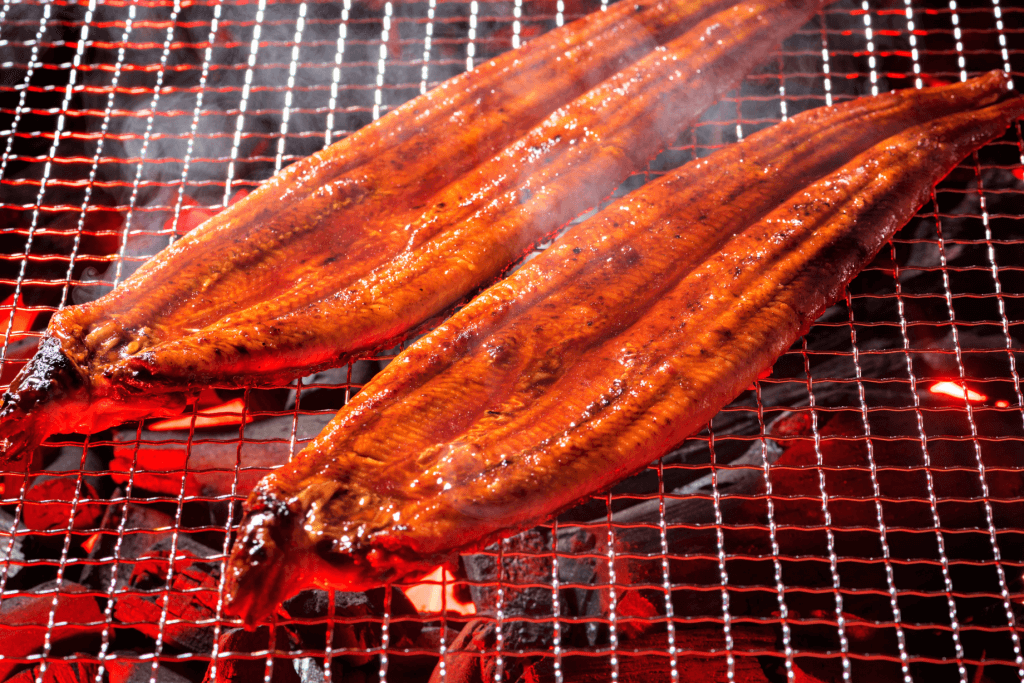
All things considered, unagi holds a special place in the hearts and palates of food enthusiasts. Whether enjoyed in traditional preparations like unadon or explored in uncommon preparations, grilled eel continues to captivate significantly with its tender, succulent meat and the delightful mix of sweet and savory flavors. Overall, unagi is a testament to the intricate relationship between food, culture, and the celebration of seasonal abundance! Have you ever eaten unagi before? How did you eat it? Let us know in the comments below!

